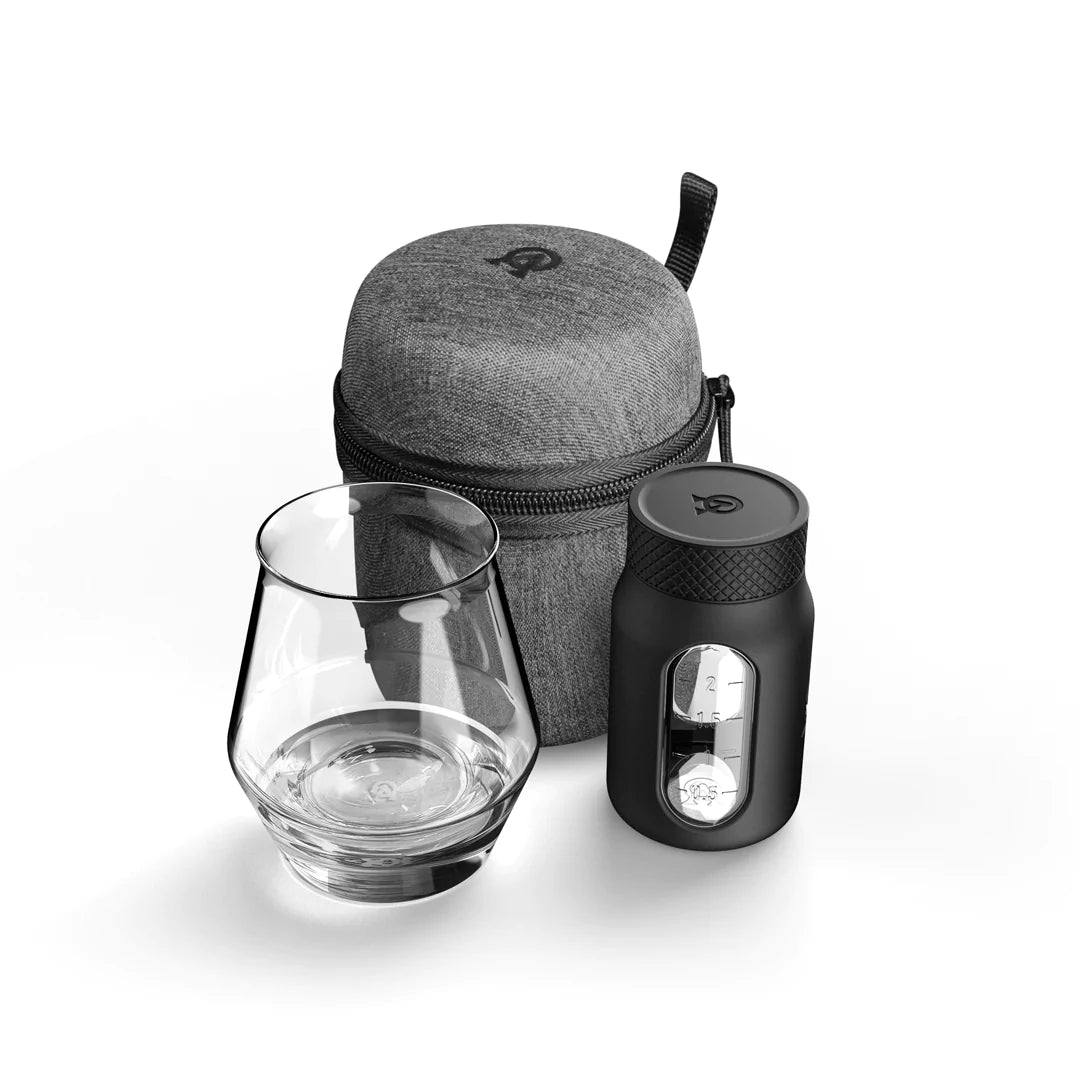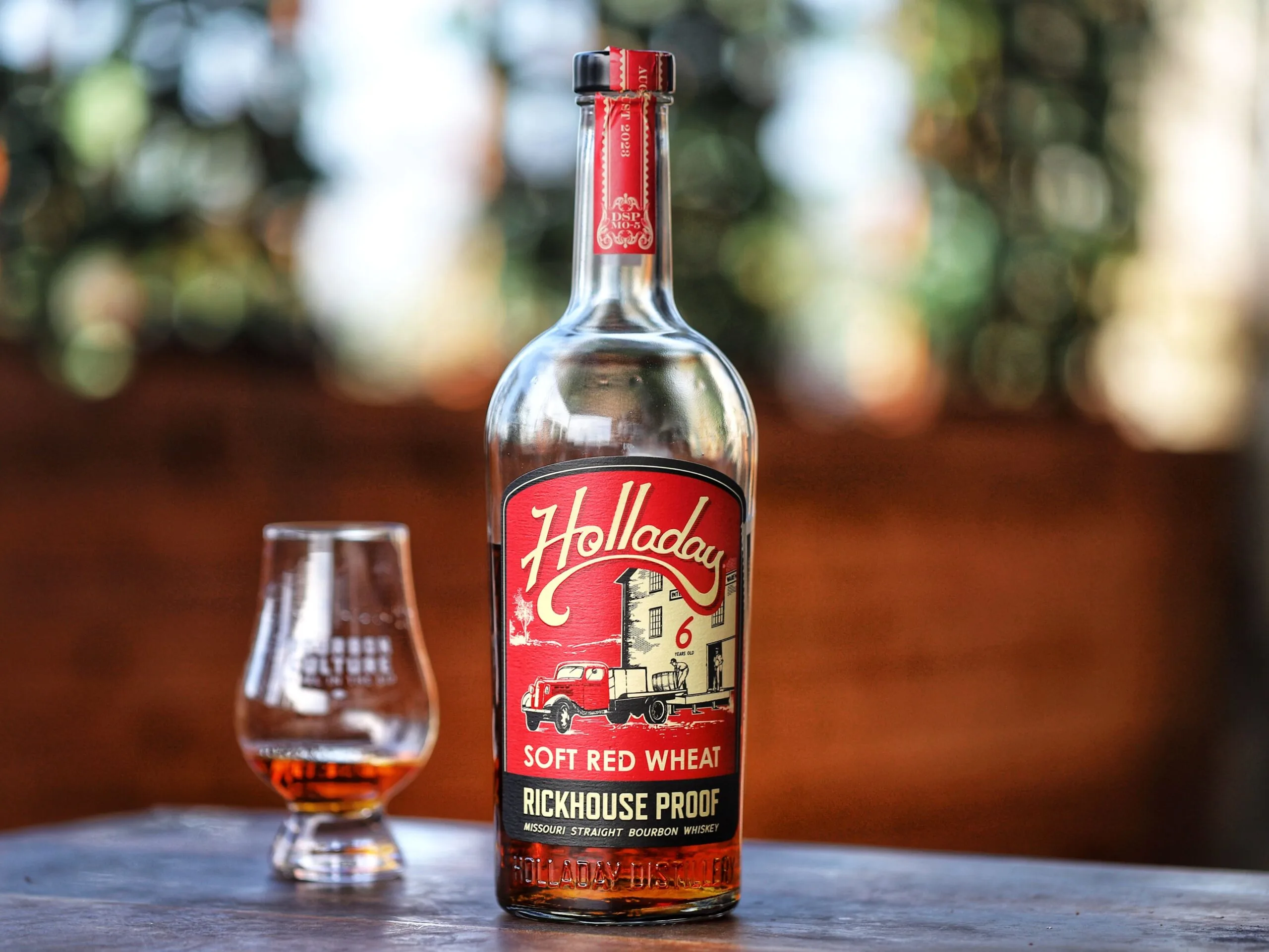| Don't like ads? | No ads |
In my previous review on Ben Holladay’s Bottled-in-Bond bourbon, I gave a rundown on everything you needed to know regarding the background of the distillery and their operations. For this review, I’ll be focusing my attention on a second bourbon mash bill that they’ve released: a wheated bourbon.
The fascination with wheated bourbon
One observation I have made about new bourbon enthusiasts is their predilection towards wheated bourbons. Why is that? I think that a major reason is that they’ve probably been given a pour of Weller or Pappy Van Winkle early on and found the taste to be something they enjoyed. Then, when they go to read more about either of those brands, they are immediately hit with hype articles and hype reviews. This validates their wheated bourbon experience and makes them want it even more.

I’m saying all of that because it also was how I started off as well. It took me much longer to appreciate rye whiskey and high-rye bourbons than it did wheated bourbon.
But not all wheated bourbon was created equal as I soon found out. After I tried all of the major brands, I started trying out small distillery and craft products. I soon realized just how different they could be – and not in a good way. Young wheated bourbon tended to have off-tastes that haunt me to this day (astringent, Magic Markers, grassy). I began to avoid any new wheated bourbon altogether.
Luckily for me, my friend Mike introduced me to this bottle. I was impressed with my first taste, which I was not expecting. Thankfully, he generously let me spend some time with it to fully experience what the people at Ben Holladay had created.
Soft Red Wheat vs Hard Red Wheat
Have you ever wondered why some brands put extra descriptors on their wheated bourbons/wheat whiskies? It’s because not all wheat is the same. What I found out is that “Red” is just a color characteristic of the wheat, but the part to pay more attention to is the word “soft.” Aside from the season which it’s planted (winter for soft, spring for hard), soft wheat has a lower percentage of gluten than hard wheat.
The reason why we see so much more “soft” wheat being used in distillation probably has to do with the difference in gluten (which is protein). Protein is not broken down by enzymes during the fermentation process. So any extra protein is just getting in the way of any extra starch (sugar) that the yeast is feeding on during fermentation. So soft wheat should equate to more yield (alcohol) during the fermentation process. Now you know!

Ben Holladay Soft Red Wheat Rickhouse Proof Specs
When I first saw the moniker “Rickhouse Proof” on the label, I laughed. I’ve seen barrel proof, cask strength and barrel strength before – but never “Rickhouse Proof.” I guess it’s Ben Holladay’s way of trying to be different. They also use the term “One Barrel” on another label to describe a single barrel, but it’s the same idea. Being different is good sometimes when you’re the new guy on the block.
But the creators of Ben Holladay’s wheated bourbon played it safe by not being too different in the recipe they chose for this bourbon. They took their original ryed bourbon recipe (73% corn, 15% rye and 12% malted barley) and substituted the rye for wheat. I am assuming that the same distillation methods were used as well: The white dog comes off of their 18″ diameter Vendome column still at 120 proof and gets put into the barrel at 118 proof. This is excellent news for a wheated bourbon aficionados because it’s generally agreed that a lower barrel entry proof makes for a better wheated bourbon.
In order to comply with the rules and regulations of being a “Straight Missouri Bourbon,” Ben Holladay sourced all of its corn and barrels from within the state. It must be nice having Independent Stave Company so close!

Ben Holladay has gone above and beyond with label information as well. It should be applauded that not only do they lay out the dates that a particular batch was barreled and bottled, but also the warehouse and floor the barrels were stored on. This should become the gold standard for all other distilleries to do as well.
Before I get started with the tasting notes, I must compliment the bottle design with its raised glass surfaces on the bottom to the attractive “vintage”-looking label. A twist cap is an odd choice, but the cap doesn’t feel like cheap plastic, it’s similar to the weight and feel of Bakelite. Now that I’ve covered all of the pertinent info, let’s get into the tasting notes! As usual, I’ve sampled this neat in a glencairn.
Tasting Notes
Nose: A sweet opening of toffee and brown sugar blend in nicely with a touch of vanilla. This is more developed than I was giving it credit for. I’m surprised to find a decent amount of oak as well – something that I think is extra hard to get right at this age. The fruit seems less noticeable than it did on the lower-proofed versions of Ben Holladay. I can find red apples, but not at the scale I did in the 100 proof bottles. Other fruit may be lurking as well, but at 120 proof, I’m primarily noticing tannins and sweets.
Palate: Each sip sees a nice caramel sweetness accompanied by the orchard fruits that weren’t so apparent on the nose. Baking spices (and oak spice) come next with cinnamon, peppercorns and a touch of allspice. The one thing that surprises me the most is that there are no hints of this being young or from a bourbon producer with so little experience. The 120 proof points definitely aren’t shy and new drinkers may squirm a bit while drinking this, but it’s not so bad if you’re a little more experienced. It’s loud and proud and wants you to take notice without chasing you away.
Finish: The spice notes follow through on the finish leaving a lingering heat that’s pleasant all the way to the point of your next sip. Cinnamon and ground pepper are the two most noticeable ones. There is also a nice residual sweetness to keep the oak and tannins at bay. The fruit notes fade away somewhat quickly. I like how well-rounded this finished.
Score: 7.5/10
With two different Ben Holladay releases under my belt, I must admit my admiration for the brand. They’ve done what few other new distilleries have done and have nailed both a ryed and wheated bourbon. That’s no easy task as some distilleries are typically competent in one or the other (hint: it’s rarely the wheated one).

While I haven’t had enough time to review the wheated bottled-in-bond version, Ben Holladay Rickhouse Proof has wow’ed me with an extremely competent wheated bourbon. This is a competitor to Maker’s Mark in every sense. In fact, the only difference that really stood out was that Maker’s fruit leans a bit more towards cherries and Holladay’s leans a bit more towards apples. What’s your preference?
Final Thoughts
I mentioned above how similar I found this to be with Maker’s Mark. And while I’d love to say that you should pick the Holladay over the Maker’s, it may come down to a price difference for many. Because while Ben Holladay is certainly on their way to pumping out the volume, they are nowhere close to competing with Maker’s at scale. Nowhere is this more apparent than their pricetags. While Ben Holladay Rickhouse Proof can be found between $70 and $80, Maker’s Mark Cask Strength Bourbon is almost half of that. That’s not insignificant.
I don’t normally say this, but everything I just said should prompt potential buyers to seriously consider the value in a bourbon like this before pulling the trigger. I live by the motto of “try new things” but if Ben Holladay Soft Red Wheat Bourbon is so similar to Maker’s Mark, does it need to be tried just to confirm that? It’s something that I can’t stop thinking about since I began writing this review.
Ultimately, I think the future of Ben Holladay’s Wheated Bourbon is going to depend on if they can get their price under $10 per year aged or if the bourbon matures into a profile that separates itself from Maker’s. Until then, if you want to support new distilleries, I respect your choice in buying this bottle. But if you are on a journey of trying new and unique bourbons and are kind of on a budget, Ben Holladay’s wheated bourbon might be one to skip.
Featured Products
- Neat Traveler

- View Larger
- Description:The Aged & Ore Neat Traveler is a complete travel kit for spirits. We combined our widely praised Neat Glass with one of our 3oz Flight Bottles and housed them together in a custom EVA travel case. Perfect for a night away with your favorite pour. The tie
- Bottle Flight

- View Larger
- Description:The Aged & Ore Bottle Flight is a premium set of 4 custom silicone wrapped glass bottles designed to transport and share samples of your favorite spirits. The flight bottles come in a custom EVA travel case that fits perfectly in any small bag. An Aged &
- Travel Bundle

- View Larger
- Description:This Bundle combines two of our crowd favorite products, creating the ultimate travel bundle to bring along your favorite spirits and glassware. Bundle Includes: Neat Traveler (Gray) Bottle Flight (Gray) Note: This bundle is only available in gray and col
*Bourbon Culture is reader-supported. When you buy through links on our site, we may earn an affiliate commission.

